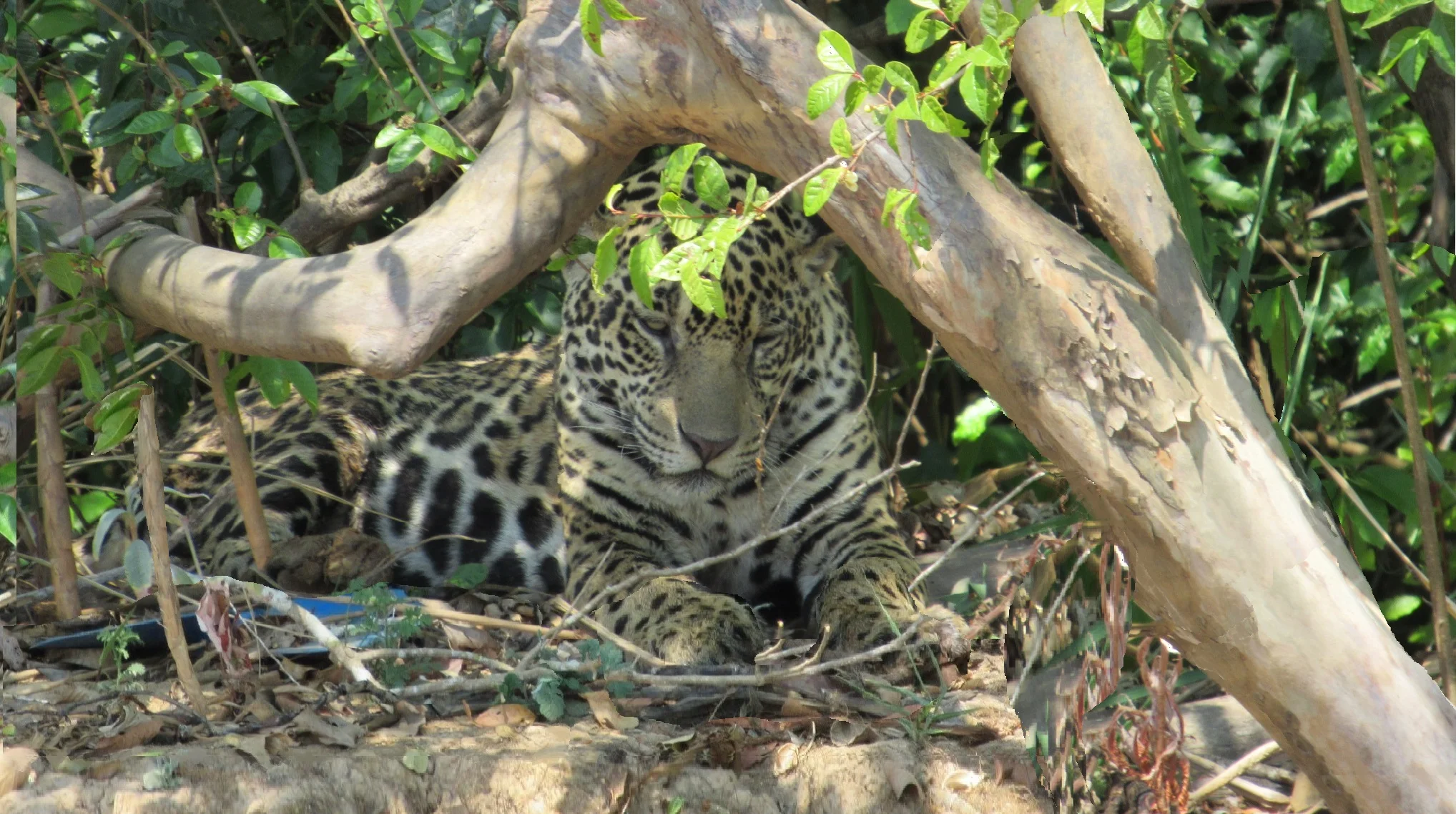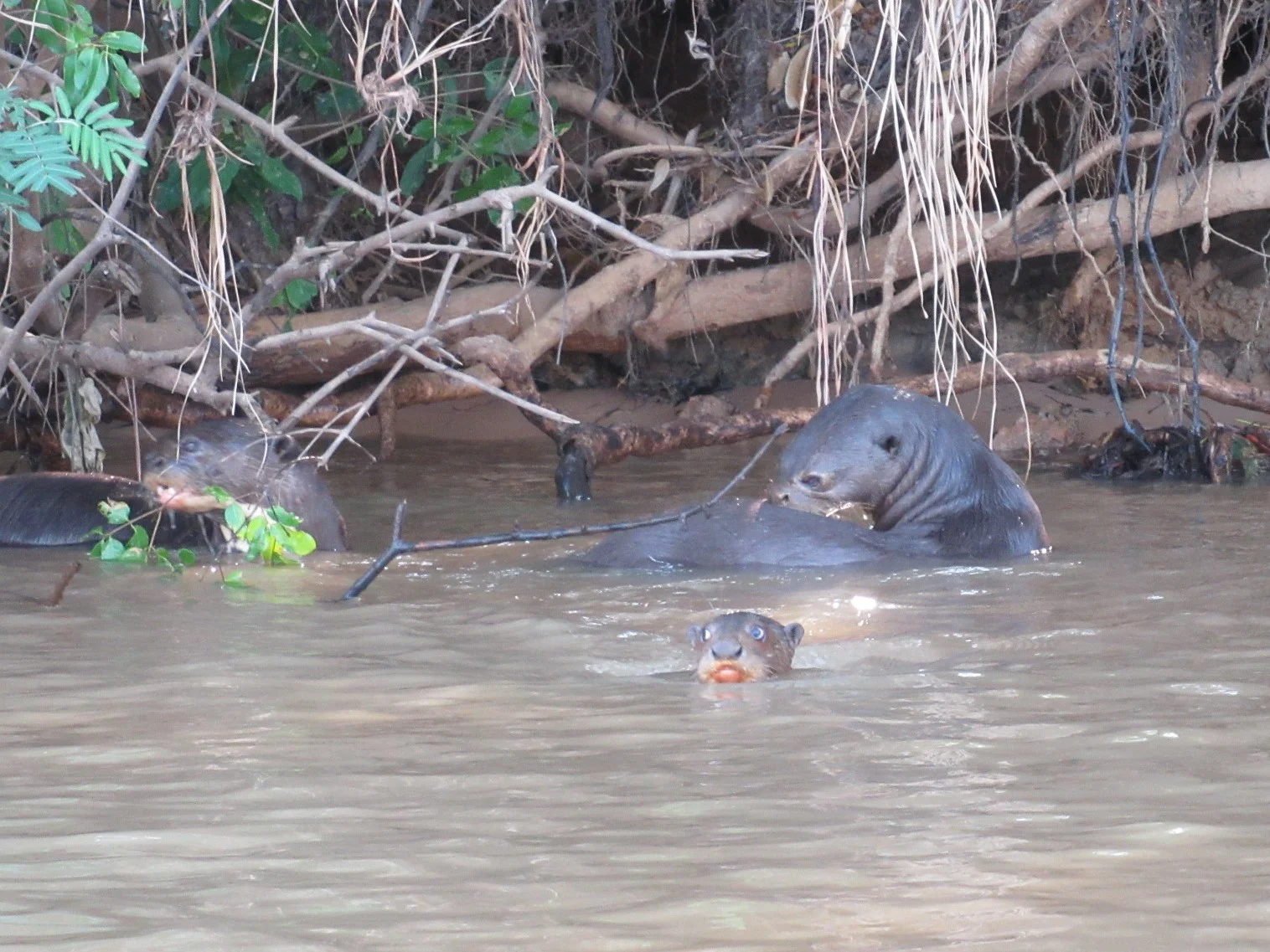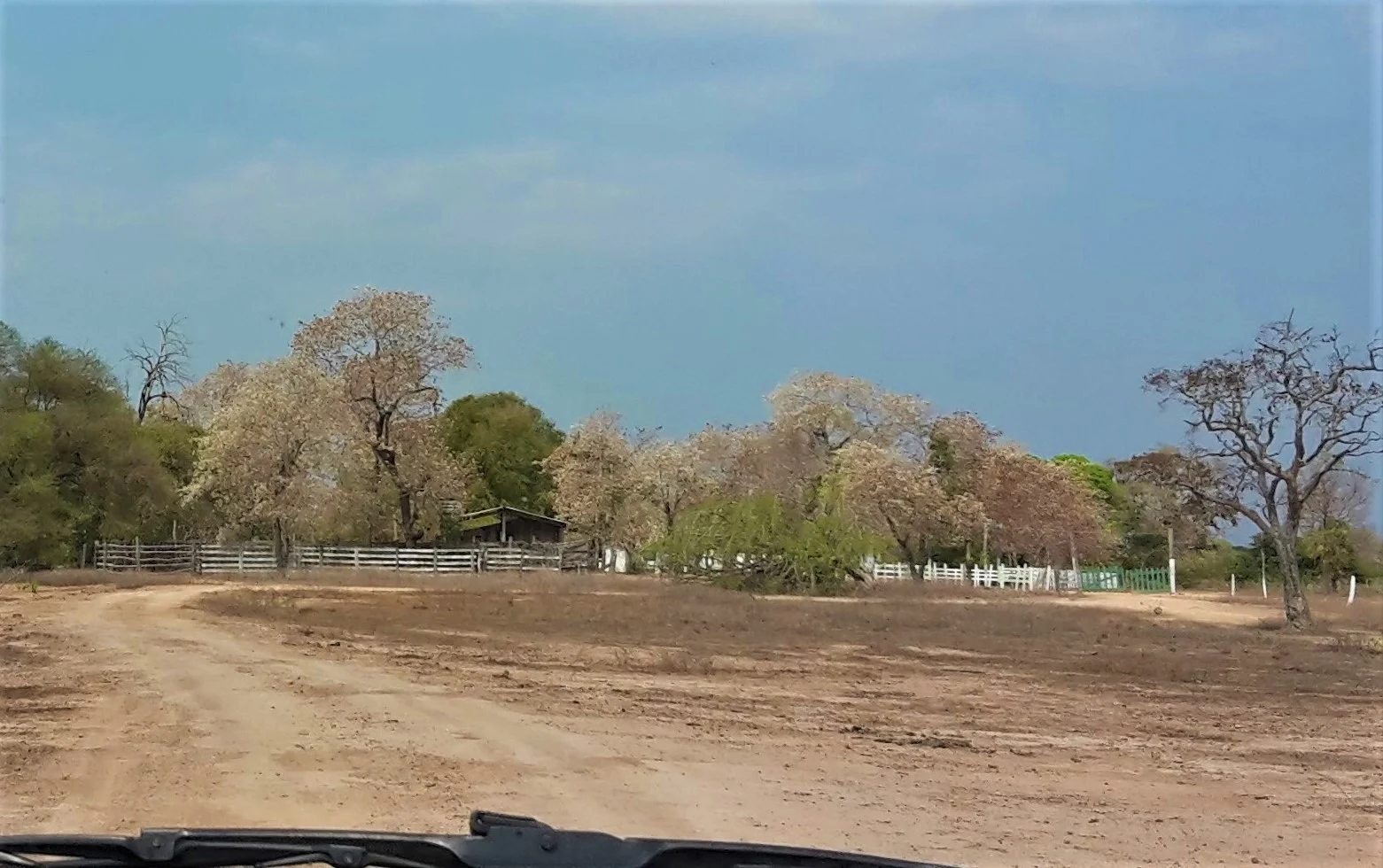After a great visit to Iguassu Falls, we flew northwards into the heartlands of Brazil. We were going there because we had planned a jaguar safari in the Pantanal.
 |
| One of the South American jaguars that we saw in the Pantanal, Brazil |
The Pantanal is the biggest inland wetland in the world. It covers around 200,000 sq km of central Brazil, eastern Bolivia and north-eastern Paraguay.
It is one of the most biologically diverse places on Earth, with more than 4,700 species of plants and animals. It is also a UNESCO World Heritage Site.
 |
| Cuiabá, Brazil, gateway to the northern Pantanal, Brazil |
We'd booked our safari online from home in New Zealand, so were reassured when our Cuiabá hotel told us that we would be picked up early the next morning to drive into the Pantanal.
Very, very early the next morning, we were met and briefed on our journey. Then our driver loaded our gear into his 4-wheel-drive, and we were off.
It is a very long drive deep into the wetlands of the Pantanal, so we first made a stop in the town of Poconé, for water and supplies.
Poconé marks the beginning of the Transpantaneira Road, a 150 km stretch of isolated dirt road that runs through the Pantanal, to link Poconé and Porto Jofre – jaguar territory.
 |
| Us at the beginning of the Transpantaneira Road near Poconé |
Several times we were stopped by large herds of cattle being driven along the road, and we wondered at the impact of so much cattle on the wetlands!
 |
| Pantanal entrance with guardians |
We were hoping to spot endangered and rare species of wildlife in the Pantanal, as well as unique birds. So, we drove further along the Transpantaneira Road and deeper into the Pantanal, with huge anticipation.
After a long, dusty but interesting drive, we arrived at Pousada (guest house) Clarinho.
We were there for lunch, which consisted of a range of meats, fruits, and salads prepared in the local style. Over lunch, we met up with Carlos, our safari guide, and a young Spanish couple who would join us on safari.
During lunch there was a bit of excitement, as a rare marsh deer came to the local waterhole to drink.
 |
| Female Marsh Deer, Pantanal (UNESCO), Brazil |
After lunch, we set off in a 4-wheel-drive
ute, with guide Carlos on a raised seat in the
back, watching for wildlife.
Time and time again, we screeched to a halt to view animals and birds in the wetland grasses alongside the road. It was so interesting.
 |
| Caiman spotted on our drive in the Pantanal (UNESCO) |
A highlight was spotting dozens of caimans sunning themselves on the banks of waterholes, and lurking among the lily pads. Caiman are large aquatic reptiles that are closely related to alligators and crocodiles. They live in the river and swamps of Central and South America.
Driving the Transpantaneira meant crossing about 120 rickety wooden bridges, built to ensure vehicle access during the wet season.
Although in varying degrees of repair, they seemed to be standing up to the passing traffic.
After several hours we reached the end of the road; Porto Jofre. This small settlement, consisting mostly of a few pousadas and boats, is the entry point to the undeveloped and near pristine, Pantanal Mato-Grossense National Park. It is here that we hoped to see jaguars.
We were staying at Porto Jofre Pousada and Camping. Our room was basic but clean, and had its own bathroom and air-conditioning. The latter being a necessity as it was extremely hot, with the temperature in the mid-40's!
The next morning, the sun was just coming up
as we had breakfast, and then it was onto a tiny motor-boat to head up river for some jaguar spotting.
We were one of a small number of boats on the river, some faster than others, all carrying eager wildlife spotters. Fortunately, it didn't feel crowded.
The river was big enough, so that with boats going in different directions at different times, it seemed as though it was just us enjoying the river and nature.
We were travelling at a very sedate speed so we could watch the surroundings. The bird life was amazing with so many
different calls all around us, some more tuneful than others.
Every tree along the river seemed to have an inhabitant or two perched on its branches.
 |
| L: Whistling heron, Jabiru storks, Anhinga. R: Wattled Jacana, Greater rhea, Black collared hawk |
There were ibis, cormorants, storks, herons, jacanas, curassows, hawks, rare macaws, greater rheas and kingfishers, to name few; an endless range of water
birds as well as land birds.
We were told that there were over 550 different
species of birds in the Pantanal.
Along with the amazing birdlife, we saw lots
of wildlife, including capybaras. These are furry, blunt-nosed creatures about the size of a very large dog.
They swim very well with the help of webbing
at the joints of their feet, and seem to like sitting on sandbanks. They are
the largest living rodent in the world.
We saw individuals, pairs, and a lovely group
of females with a whole lot of babies. Very cute!
We also saw more and bigger, caiman, and there were so many of them! It was a little daunting being in a small boat around these creatures.
They were either
in stealth mode with just their eyes and snouts poking out of the water, or
basking in the sun on the river bank.
They are known as the scavengers of
the Pantanal, because they eat anything and everything. We even saw one caiman
eating another!
Quite early in our morning boat trip, word
came over the RT that a jaguar had been spotted not far from where we were. We
raced to the spot and there it was - on the riverbank, lounging in the shadow of a tree. So exciting!
 |
| Jaguar 1: Cooling off under a tree, Rio Cuiabá, Pantanal (UNESCO) |
Jaguars are great swimmers, so we were pleased not to get
too close (about 3 metres away, but in a fast boat). We were able to have a good look and get some wonderful photos.
Jaguars are considered ‘Near Threatened’, rather than ‘Endangered’ as a species. But because their habitat is being cleared for farmland, and they are being hunted, their numbers continue to decrease.
But we were lucky, as during this morning's trip we saw two more jaguars, a big one sitting on the river bank, and another moving back into the undergrowth.
 |
| Jaguar 2: On the riverbank, Rio Cuiabá, Pantanal (UNESCO) |
Our guide and driver were most excited at
seeing three jaguars in one trip - as were we!
We'd been on a safari in the Bolivian Gran Chaco last year and seen jaguars. However, we were much closer here, being on the water. We felt privileged to see these big cats in their natural habitat.
We also saw some rare giant river otters. An adult can grow to about 1.7 m long, and they are very fast in the water, and look so sleek.
 |
| Giant river otters, Rio Cuiabá, Pantanal (UNESCO) |
In the boat, we were able to get really close to an extended family coming in and out of their den under the river bank.
They were really noisy, as they darted about looking at us and wondering if we were a threat.
 |
| Giant river otter pup, swimming toward us, Rio Cuiabá, Pantanal (UNESCO) |
There was a baby otter that was very curious,
and kept swimming toward our boat. However, the adults quickly herded it back
to the den.
In all, we had about eight hours on
the river and saw a huge range of wildlife.
 |
| Sunset over the Rio Cuiabá, Pantanal (UNESCO) |
Bags packed and loaded on the ute the next
morning, we headed back along the Transpantaneira toward our final nights’
accommodation.
We arrived at Pousada Clarinho, just in time for another delicious lunch.
That evening we became friendly
with a hyacinth macaw that had been rescued, and now lives at Pousada Clarinho. These big birds are the longest of the parrot family (around 1 metre from top to tail),
and due to habitat loss and trapping, are considered a vulnerable species.
Later, we went out spotlighting, seeing another marsh deer, and some howler and capuchin monkeys.
The next morning, we were up early to see the sunrise from a
giant tower above the treetops. It was a spectacular sight.
The sun was a huge red ball, slowly rising,
accompanied by a chain of birds awakening.
After breakfast we had another bush walk, and
then we were on the Rio Claro (Claro River) in a very small boat. While on the water, we spotted a toucan
flying past. What amazing-looking, but hard-to-find birds they are.
We were pleased to be doing these activities
early in the day as by 10 am, the temperature was already up to 46 degrees.
 |
| Marg, looking cool on a hot day in the Pantanal |
On our last day we went out on horseback to see what wildlife we could find. We spotted some wild buffaloes and more
monkeys but it was so, so hot. We think the animals were staying in the shade and
out of sight. Smart critters.
Heading back to Cuiabá for the night, we agreed that we'd had an incredible experience in the Pantanal. It is something we will never forget.
The next morning, we were up very early again in order to catch a flight to Salvador, our next destination.
The above blog is part of our 4-month tour of South America. The first
blog on this tour is called "Buenos Aires here we come".








